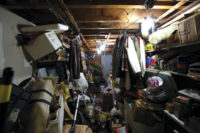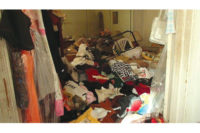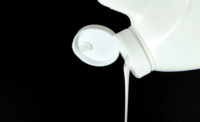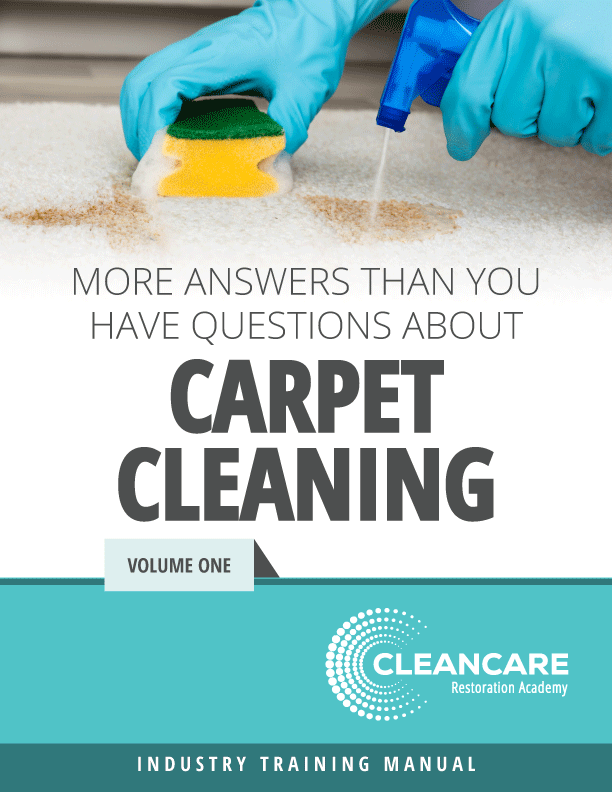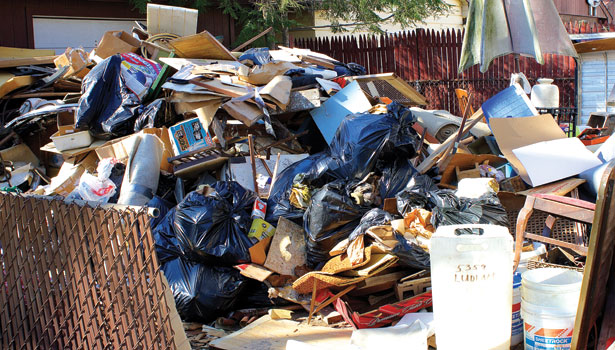Hoarding: Perception Doesn’t Equal “Reality”
While reality TV shows have raised awareness about hoarding, they often send a poor message about other aspects of the work – like safety.








Perception isn’t always reality. And when it comes to hoarding, the “reality” shows that are broadcast across various cable networks are a far cry from the proper protocol that should be followed on such jobs. For starters, there’s usually a complete lack of safety taken into consideration, which is a huge concern when you’re often dealing with rodent and feces-infested properties, which provide plenty of health dangers on their own. In some cases, there are properties with blood borne pathogens and bio hazards.
Rodent DiseasesMost hoarding jobs have rodents. And just because you can’t see them doesn’t mean they’re not there. Here’s a look at some of the common – and debilitating – diseases that can be contracted from mice and rats on such jobs if the proper precautions aren’t adhered to: • Hantavirus Pulmonary Syndrome: Spread by rodents, usually deer mice. Is typically contracted by humans after inhaling dust contaminated with urine and feces of infected animals. • Symptoms: Fatigue, fever, muscle aches, headaches, dizziness, chills, abdominal pain, nausea, vomiting, diarrhea, fluid buildup in lungs, coughing, shortness of breath. • Leptospirosis: Also known as “Weil’s disease,” it’s contracted after exposure to food or water contaminated with rodent urine or feces. Is also spread through skin or mucous membranes. • Symptoms: Fever, headache, chills, vomiting, jaundice, red eyes, abdominal pain and in severe cases, kidney and liver failure. • Rat-Bite Fever: Transmitted via the bite or scratch from an infected rat. Can also be contracted from handling deceased infected rats or eating/drinking food or water that’s contaminated. • Symptoms: Fever, vomiting, headache, muscle pain, joint pain, rashes. • Salmonellosis: Carried by both rats and mice, this is transmitted via consumption of contaminated food and/or water • Symptoms: Diarrhea, fever, abdominal cramping. • Hemorrhagic Fever with Renal Syndrome: Spread by brown rat, field mice and black voles, it’s most often contracted through the inhalation of dust that’s been contaminated with urine and feces. • Symptoms: Sudden intense headaches, back pain, abdominal pain, fever, chills, nausea, blurred vision. More severe cases include low blood pressure, acute shock, vascular leakage and acute kidney failure. |
Then, there’s the perception that hoarding cleanup is nothing more than throwing away trash. In reality, you not only have to watch out what you’re disposing of and that anything harmful isn’t being picked up and used by others, but you also know how to deal with the hoarder’s mental and emotional states, as to not damage them and make things worse.
As you might imagine, Michael Tillman, the founder of Amdecon, isn’t a big fan of the hoarding television shows.
“These TV shows have brought a lot of awareness to the hoarding problem, but they’re also totally ignoring any safety issues,” says Tillman, who is also a certified safety and health official and an OSHA-authorized trainer. “So from that aspect, they’re giving people a lot of bad information that really can result in a lifetime of health problems.”
On the matter of safety, Tillman says the No. 1 concern should be Hantavirus Pulmonary Syndrome (HPS), which is typically contracted by inhaling the dust of contaminated rodent urine or feces. HPS symptoms include fatigue, fever, muscle aches, headaches, dizziness, chills and nausea. More advanced symptoms consist of fluid in the lungs, coughing and shortness of breath. What’s more is that HPS has a frightening 38% fatality rate. (See the “Rodent Diseases” sidebar for more diseases that can effect hoarding cleaning crews.)
“People don’t take Hantavirus seriously – it can kill you or make you sick for the rest of your life,” Tillman says. “It can be a permanent lifetime respiratory disease.”
Hence, health issues are a big concern for cleaning crews – and not just from diseases, but also from the likes of unsafe structures, mold, faulty electrical wiring, even snakes and other creatures.
“If you watch those TV shows, you see all the people never wearing respirators crawling all over this stuff,” Tillman says. “That’s just really bad. They should be ashamed of themselves as professionals.”
To stay safe on hoarding jobs, Tillman recommends that all workers start by receiving the proper vaccinations ahead of time. He also recommends proper respiratory protection, full body suits, gloves, booties and heavy duty work boots with a rubber over-boot for disinfecting purposes. He says the severity of the hoard will be contingent on what type of respirator should be worn. (See the “Levels of Hoarding” sidebar for more information.)
Anyone Can Throw Away Trash…
Tillman sees more and more restoration businesses getting in the hoarding field – and it’s due to a variety of reasons. For starters, most companies already have the proper PPE and overhead. And unlike the similar field of bio-recovery, while hoarding cleanup might provide some shock and awe as to how people can live in such a situation, it won’t scar professionals along the lines that trauma cleaning will.
But perhaps the biggest reason why restorers are getting into it is because there’s a big market for such services – and hoarding isn’t going away.
The 5 Levels of Hoarding• Level 1: Doors and stairways are accessible. Light evidence of rodents/pests. Clutter isn’t excessive. No odors are evident. • Level 2: At least one exit is blocked and one major appliance has been inoperable for 6 months. Pet odor, pet waste and pet dander are present. Light to medium evidence of rodents/pests. Clutter is evident in at least 2 rooms, garbage cans are overflowing, light mildew exists in kitchens/bathrooms and food prep surfaces are lightly soiled. • Level 3: Visible clutter outdoors. Two or more inoperable major appliances. Light structural damage. Pets exceed city limits. Rodent evidence, flea evidence. Indoor clutter, narrow hallways. One bedroom or bathroom is unusable, excessive dust present. Heavily soiled food prep areas. • Level 4: Structural damage older than 6 months is present. Mold and mildew are evident, as is hazardous electrical wiring, sewer odor or backup, animal waste, pet damage and rodent infestation. Bedroom is rendered unusable, rotting food exists on counters and hazardous materials are stored in the home. Aged canned goods, dirty dishes and lice may also be present. • Level 5: Extensive structural damage and a lack of running water, electricity and sewer/septic system. Standing indoor water, dangerous pets present and heavy rodent, mosquito or insect infestation. Kitchen and bathroom is rendered unusable due to the clutter and human feces. Rotting food and other hazardous materials are within the home. |
“Anybody can throw away trash,” Tillman says. “It doesn’t take any skill. But they do need specialized training because (hoarding) is a mental illness.
“Anybody can go in there and say, ‘These people are crazy, they need to get their act together. We’re going to throw away this trash and straighten up your life.’ You (may) have just taken the hoarder and increased the mental and emotional damage to them. You’ve made it worse – you’ve destroyed their world.”
So in addition to the proper PPE, Tillman also says that it’s necessary to have a crew chief on jobs that has the skills to deal with the hoarder and handle mental health experts. In fact, along the lines of mental health, Tillman says how hoarding jobs are paid for could soon be changing.
“I have a student that’s first in the nation to have jobs paid for by the hoarder’s health insurance – because it is mental health,” he says. “In the future, under the right circumstances, a lot of the hoarder jobs may be covered by the homeowner’s health insurance. So it’s very important that you develop relationships with mental health professionals.
“In the restoration business, the insurance adjusters are the key to your success. In this business, the mental health professionals are the key to your success.”
Looking for a reprint of this article?
From high-res PDFs to custom plaques, order your copy today!




